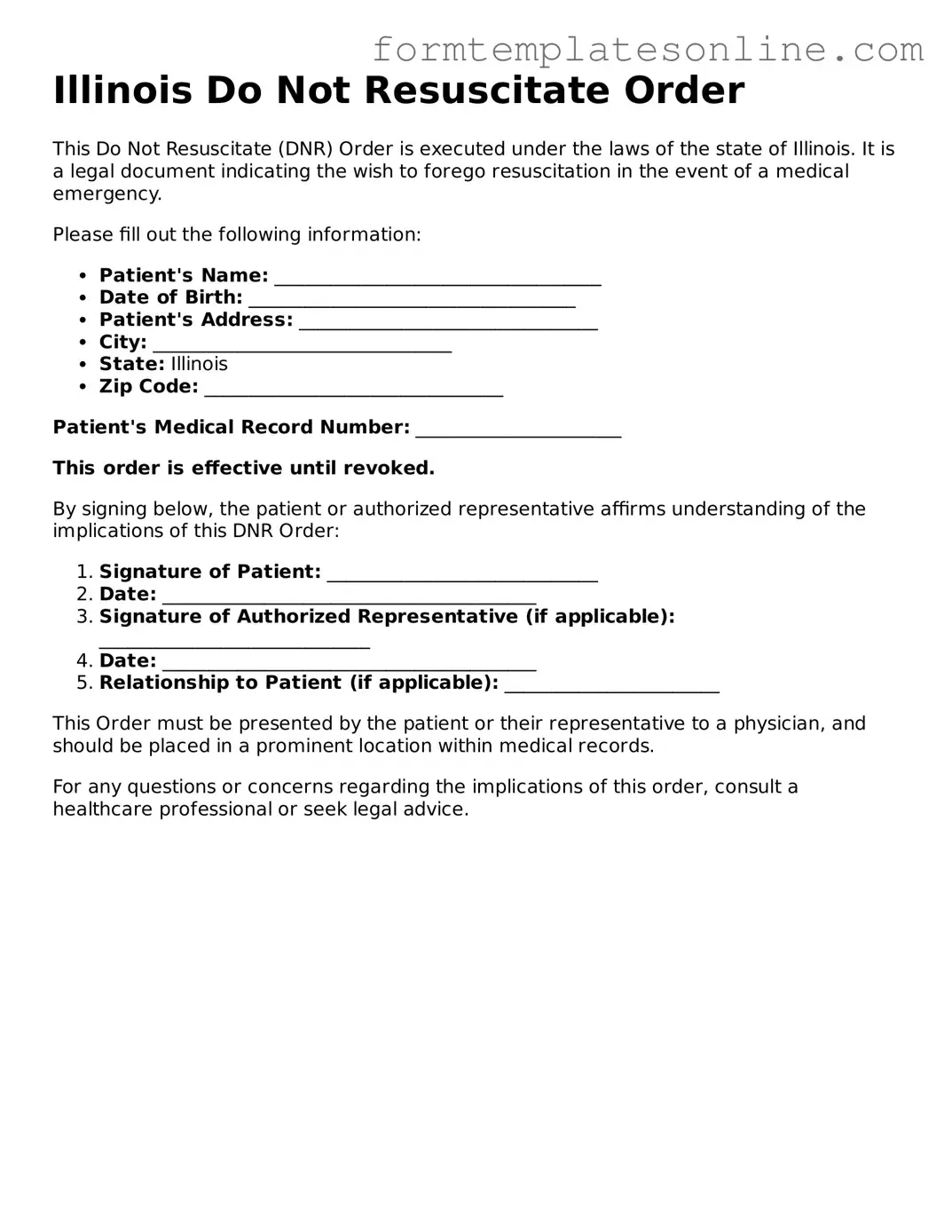What is a Do Not Resuscitate (DNR) Order in Illinois?
A Do Not Resuscitate Order is a legal document that allows a person to express their wish not to receive cardiopulmonary resuscitation (CPR) in the event of a cardiac arrest or respiratory failure. In Illinois, this order is recognized by healthcare providers and can guide medical decisions during emergencies.
Who can create a DNR Order in Illinois?
In Illinois, any adult who is capable of making their own healthcare decisions can create a DNR Order. Additionally, a legal guardian or an authorized agent under a power of attorney for healthcare can also establish a DNR Order on behalf of someone else if that person is unable to do so.
How do I obtain a DNR Order form?
The DNR Order form can be obtained from various sources, including hospitals, healthcare providers, and online resources. It is important to ensure that you are using the official Illinois DNR form to ensure that it is valid and recognized by medical personnel.
What information is required on the DNR Order form?
The form typically requires the patient's name, date of birth, and the signature of the patient or their authorized representative. It may also need to be signed by a physician to validate the order. This ensures that the order is taken seriously and is legally binding.
Where should I keep my DNR Order?
It is crucial to keep the DNR Order in a location that is easily accessible. Many people choose to keep it in their medical records, with their primary care physician, or in a visible place at home. Additionally, providing copies to family members and caregivers can help ensure that your wishes are known in an emergency.
Can I change or revoke my DNR Order?
Yes, you can change or revoke your DNR Order at any time. To do this, you should inform your healthcare provider and complete a new DNR Order form if necessary. It is essential to communicate any changes to family members and caregivers to avoid confusion during a medical emergency.
Will a DNR Order affect other medical treatments?
A DNR Order specifically addresses resuscitation efforts and does not affect other medical treatments. Patients with a DNR Order will still receive appropriate medical care, pain management, and comfort measures as needed. It is important to discuss your overall healthcare wishes with your medical team.
What should I discuss with my family about my DNR Order?
Having open conversations with family members about your DNR Order is vital. Discuss your reasons for wanting a DNR, what it means for your overall care, and any other healthcare preferences you may have. This helps ensure that your loved ones understand your wishes and can advocate for you if necessary.
